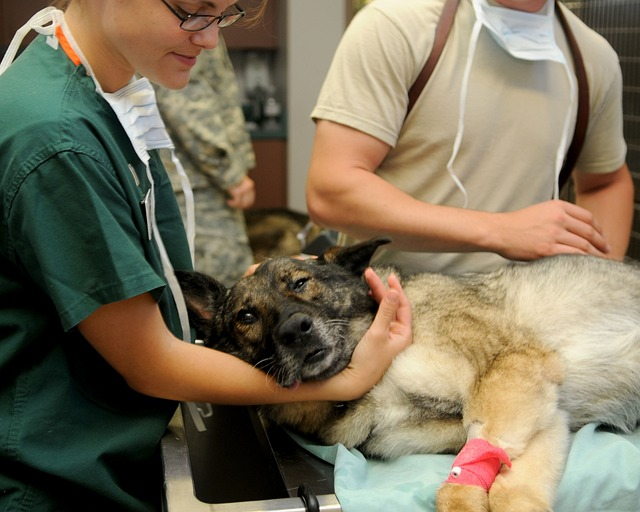Trazodone Dosage for Dogs: Expert Guidance and Tips

As committed pet owners, our bond with our cherished four-legged companions is profound, as we tirelessly strive to protect their wellbeing and happiness.
Yet, just like humans, dogs can experience periods of anxiety, fear, or restlessness that can disrupt their daily lives.
This is where medications like Trazodone come into play, offering a potential solution to help our furry friends find calm amidst life’s storms.
However, understanding the proper dosage of Trazodone for dogs is crucial to ensure its effectiveness and safety.
In this guide, we’ll delve into the world of Trazodone, exploring its uses, benefits, and most importantly, how to determine the right dosage for your canine companion.
By the end, you’ll be equipped with the knowledge and confidence to navigate this medication with the well-being of your furry friend in mind.
Key Takeaway:
- Trazodone, a serotonin-regulating medication, effectively manages anxiety and behavior in dogs.
- Always consult a vet for proper dosage and usage guidelines.
- It provides calmness without excessive sedation, making it suitable for various anxiety triggers.
- Combining Trazodone with behavior modification techniques enhances its effectiveness in promoting a balanced, happier life for your dog.

Trazodone Dosage For Dogs
The appropriate Trazodone dosage for dogs depends on various factors including the dog’s weight, overall health, and the specific condition being treated.
It’s crucial to consult a veterinarian for personalized dosage instructions. However, as a general guideline:
- Dosage Range: 2.5 to 5 mg per pound of body weight.
- Frequency: Typically every 8 to 24 hours.
- Example: For a 50-pound dog, 125 to 250 mg per dose.
- According to Dr. Jerry Klein, Chief Veterinary Officer for the AKC, “recommends that veterinarians should dose the dog depending on that individual dog’s medical history and possible drug interaction concerns.”
Start at the lower end and monitor for effects. Consult your vet for personalized instructions.
7 Main Uses of Trazodone for Dogs
Trazodone, originally developed as an antidepressant for humans, has found its way into the world of veterinary medicine, offering a potential solution for a variety of behavioral and emotional issues in dogs.
While it’s essential to consult a veterinarian before starting any medication regimen, understanding the main uses of Trazodone can provide valuable insight into how it may benefit your furry friend.
1. Anxiety Management:
Much like humans, dogs can also grapple with anxiety induced by factors like separation, loud noises, or unfamiliar surroundings. Trazodone can help manage these anxieties by affecting serotonin levels in the brain.
It promotes a sense of calm without inducing sedation, making it an invaluable tool for dogs dealing with situational anxieties.
2. Aggression and Reactivity:
Some dogs may exhibit aggressive behavior towards other dogs or humans due to fear, past trauma, or territorial instincts.
Trazodone can be used as part of a comprehensive behavior modification program to help reduce these aggressive tendencies.
It can help lower arousal levels, making it easier to implement training and desensitization techniques.
3. Thunderstorm and Firework Phobias:
Thunderstorms and fireworks can be a source of extreme distress for many dogs, leading to panic, destructive behavior, and even attempts to escape.
Trazodone can be administered before anticipated events to help take the edge off and minimize the impact of these stressful situations.
4. Post-Surgery Recovery:
After surgical procedures, dogs may experience restlessness, discomfort, and anxiety. Trazodone can be prescribed to provide relief during the recovery period.
By promoting relaxation without causing excessive sedation, it aids in a smoother recuperation process.
5. Generalized Anxiety Disorder (GAD):
Some dogs may suffer from chronic anxiety disorders that impact their overall quality of life. Trazodone can be an integral component of a long-term treatment plan for dogs with generalized anxiety.
It works by modulating neurotransmitter levels to create a more balanced emotional state.
6. Noise Phobias:
Dogs with noise phobias can find comfort in Trazodone.
Whether it’s the sound of construction work, loud traffic, or even routine household noises, this medication can help take the edge off and prevent excessive stress responses.
7. Travel-Related Anxiety:
Dogs that experience anxiety during car rides or other forms of travel can benefit from Trazodone.
It helps create a calmer state, making the journey more comfortable for both the dog and the owner.

It’s important to remember that while Trazodone can be a valuable tool in managing these issues, it is not a one-size-fits-all solution.
Each dog is unique, and dosages should be tailored to their specific needs.
Always consult with a qualified veterinarian who can provide personalized advice and guidance on using Trazodone safely and effectively for your furry companion.
How Does Trazodone Work in Dogs?
Trazodone, originally developed as an antidepressant for humans, operates by modulating levels of neurotransmitters in the brain, particularly serotonin.
In dogs, as in humans, this mechanism can bring about several therapeutic effects:
1. Serotonin Regulation:
Trazodone primarily works by increasing the levels of serotonin in the brain. Serotonin is a neurotransmitter that plays a crucial role in regulating mood, emotions, and behavior.
By enhancing the availability of serotonin, Trazodone helps create a sense of calm and well-being.
2. Anxiolytic Properties:
The elevation of serotonin levels contributes to Trazodone’s anxiolytic (anxiety-reducing) effects.
This is particularly valuable in situations where dogs may experience heightened levels of anxiety, such as during thunderstorms, fireworks, or other stress-inducing events.
3. Sedation without Impairment:
Unlike some other medications used for anxiety and behavioral issues, Trazodone tends to induce sedation without causing significant impairment.
This means that dogs can remain alert and responsive while experiencing a reduced level of anxiety.
4. Minimal Impact on Cognitive Function:
Trazodone’s mechanism of action results in minimal cognitive impairment.
This is a crucial benefit, as it allows dogs to maintain their ability to learn and engage in training exercises while under the influence of the medication.
5. Alleviating Aggressive Tendencies:
For dogs exhibiting aggression, whether due to fear, anxiety, or other triggers, Trazodone can be a valuable tool.
By promoting a calmer state, it facilitates more effective behavior modification and training efforts.
6. Stress Reduction in Medical Settings:
In veterinary clinics or hospitals, dogs may experience heightened stress levels.
Trazodone can be administered to help alleviate this stress, making it easier for veterinarians to conduct examinations and procedures.
7. Facilitating Rest and Recovery:
Post-surgery or after experiencing trauma, dogs may have difficulty resting and recuperating.
Trazodone’s calming effects can aid in providing the necessary environment for healing and recovery.
8. Improving Overall Quality of Life:
For dogs suffering from chronic anxiety or phobias, Trazodone can be an invaluable component of a comprehensive treatment plan.
By reducing anxiety levels, it contributes to an improved quality of life for both the dog and their owner.

It’s important to note that while Trazodone can be highly effective, it’s not a standalone solution. Behavior modification, training, and a holistic approach to your dog’s well-being are equally important.
Additionally, the dosage and administration of Trazodone should always be supervised by a qualified veterinarian to ensure the safety and well-being of your furry companion.
What is a Safe Trazodone Dosage for Dogs?
Trazodone dosage for dogs depends on factors like weight, health, and the condition being treated.
- General guideline: 2.5 to 5 mg per pound of body weight, every 8 to 24 hours.
- Example: A 50-pound dog may receive 125 mg to 250 mg per dose.
- Start at the lower end of the dosage range and monitor for effects.
- Trazodone is available in various tablet strengths (e.g., 50 mg, 100 mg).
- The duration of treatment is determined by the veterinarian based on the specific condition.
- According to AKC.org, “Generic trazodone comes in 50-, 100-, 150-, and 300-milligram tablets and requires a written prescription in some states.”
Never adjust dosage without consulting the veterinarian. They will make any necessary adjustments based on your dog’s response and potential side effects.

9 Risks of Overdosing
According to Veterinarians.org, Overdosing on Trazodone can have serious consequences for dogs. It’s crucial to follow your veterinarian’s prescribed dosage instructions and never exceed the recommended amount.
Here are the risks associated with overdosing on Trazodone:
1. Sedation and Lethargy:
Excessive Trazodone can lead to profound sedation, causing dogs to become excessively sleepy or lethargic.
This can hinder their ability to move, interact, or even eat and drink.
2. Disorientation and Confusion:
An overdose may lead to a state of confusion, disorientation, and altered mental awareness.
Dogs may have difficulty navigating their environment or recognizing familiar people.
3. Loss of Coordination:
Overdosing can cause a loss of motor coordination, making it challenging for dogs to walk or maintain their balance.
4. Lowered Heart Rate and Blood Pressure:
Trazodone can affect heart rate and blood pressure. In excessive doses, it may lead to bradycardia (slow heart rate) and hypotension (low blood pressure).
This can be dangerous, especially for dogs with pre-existing heart conditions.
According to Dr. Rania Gollakner, VCAhospitals.com, “When trazodone is used with other serotonergic drugs, serotonin syndrome is possible.
This includes signs such as vomiting, diarrhea, seizures, hyperthermia (elevated body temperature), sensitivity of the skin, depression, dilation of pupils, vocalization, blindness, excessive salivation, difficulty breathing, loss of control of movements, paralysis, disorientation, coma, and death.”
5. Respiratory Distress:
In severe cases of overdose, respiratory depression or difficulty in breathing may occur.
This is a critical situation and requires immediate veterinary attention.
6. Gastrointestinal Disturbances:
Overdosing can lead to digestive issues such as vomiting or diarrhea.
7. Serotonin Syndrome:
Although rare, extreme overdoses can potentially lead to serotonin syndrome, a potentially life-threatening condition.
Serotonin syndrome results from excessive levels of serotonin in the body and can cause symptoms like agitation, rapid heart rate, high body temperature, and seizures.
8. Potential Interaction with Other Medications:
If a dog is taking other medications, an overdose of Trazodone could exacerbate potential interactions, leading to more severe side effects.
9. Risk of Fatalities:
In extreme cases of overdose, especially in combination with other medications, there is a risk of fatalities.

If you suspect that your dog has ingested an excessive amount of Trazodone, it’s imperative to seek immediate veterinary care.
Time is of the essence, and a prompt response can significantly improve the chances of a positive outcome.
Remember, always store medications securely and out of reach of pets to prevent accidental ingestion. Additionally, consult your veterinarian if you have any concerns about your dog’s medication or dosage.
They can provide tailored advice based on your dog’s specific needs and circumstances.
When Owners Can Give Trazodone to Dogs
Owners should administer Trazodone to dogs according to their veterinarian’s specific instructions. In general, Trazodone can be given to dogs in the following situations:
1. Situational Anxiety:
Before anticipated events known to trigger anxiety (e.g., fireworks, thunderstorms).
Prior to veterinary visits or other potentially stressful situations.
2. Separation Anxiety:
In cases where dogs exhibit distress or anxiety when left alone.
3. Travel-Related Anxiety:
Before car rides or other forms of travel that may cause anxiety.
According to Dr. Wailani Sung from
4. Aggression and Reactivity:
As part of a comprehensive behavior modification program.
5. Post-Surgery or Trauma:
To aid in relaxation and recovery during the healing process.
6. Chronic Anxiety Disorders:
For dogs with generalized anxiety disorders, as part of a long-term treatment plan.
7. Noise Phobias:
To help dogs cope with fear of loud or sudden noises.

It’s important to remember the following key points:
Consultation with a Veterinarian: Before starting any medication, including Trazodone, owners should consult a qualified veterinarian. They will provide specific dosing instructions based on the dog’s weight, health status, and the condition being treated.
- Strict Adherence to Dosage: Owners must strictly adhere to the prescribed dosage and administration schedule provided by the veterinarian. Never adjust the dosage without consulting the vet first.
- Monitoring for Effects: Owners should monitor their dogs closely after administering Trazodone. Observe for any signs of adverse effects, as well as the desired calming or anxiety-reducing effects.
- Avoiding Overdose: It’s crucial to avoid giving more Trazodone than prescribed. Overdosing can lead to serious health risks for the dog.
- Combining with Behavioral Interventions: Trazodone should be used in conjunction with behavior modification techniques and training, as recommended by a professional dog trainer or behaviorist.
- Regular Follow-Ups: Owners should maintain regular follow-up appointments with their veterinarian to assess the effectiveness of the medication and make any necessary adjustments.

Always keep lines of communication open with your veterinarian, informing them of any changes in your dog’s behavior or health.
This collaborative approach ensures the well-being and safety of your furry companion throughout the treatment process.
7 Trazodone Side Effects in Dogs
Trazodone, a commonly prescribed medication for managing anxiety and behavioral issues in dogs, can be a valuable tool in improving their quality of life.
However, like any medication, it’s important to be aware of potential side effects. While most dogs tolerate Trazodone well, some may experience mild to moderate side effects.
Here are some of the possible side effects of Trazodone in dogs:
1. Sedation:
One of the most common side effects of Trazodone is mild to moderate sedation. This can manifest as drowsiness, lethargy, or a general decrease in activity levels.
It’s important to observe your dog’s response to the medication, especially after the initial doses, to gauge the level of sedation.
2. Gastrointestinal Upset:
Some dogs may experience mild digestive issues, such as nausea, vomiting, or diarrhea when starting Trazodone.
If these symptoms persist or worsen, consult your veterinarian for guidance.
3. Dry Mouth:
Trazodone can lead to decreased salivation, resulting in a dry mouth. This may cause your dog to drink more water than usual.
4. Changes in Appetite:
While not as common, Trazodone can affect a dog’s appetite. Some dogs may experience an increase in appetite, while others may have a temporary decrease.
5. Confusion or Disorientation:
In rare cases, dogs may exhibit signs of confusion or disorientation, especially if the dosage is too high for their individual needs.
6. Agitation or Restlessness:
Although less common, some dogs may paradoxically experience increased agitation or restlessness after taking Trazodone.
7. Allergic Reactions:
While rare, allergic reactions are possible. Watch for signs such as difficulty breathing, and swelling of the face, lips, tongue, or throat, and seek immediate veterinary attention if observed.

It’s important to note that not all dogs will experience these side effects, and many will tolerate Trazodone without any noticeable issues.
However, if you observe any concerning changes in your dog’s behavior or health after starting Trazodone, it’s crucial to contact your veterinarian promptly.
Additionally, always follow your veterinarian’s prescribed dosage and administration instructions, and do not adjust the dosage on your own.
They have the expertise to make any necessary adjustments based on your dog’s response to the medication.
In summary, while Trazodone can greatly benefit dogs with anxiety and behavioral issues, it’s essential to be aware of potential side effects.
Open communication with your veterinarian and careful monitoring of your dog’s response to the medication will help ensure their well-being and comfort.
FAQs
1. How quickly does trazodone take effect in dogs?
According to Dr. Stephanie Howe from PetMd.com, Trazodone typically starts to take effect within about 30 minutes to 2 hours after administration.
However, the exact onset of action can vary based on factors such as the dog’s individual metabolism, the presence of food in the stomach, and the specific condition being treated.
2. Can I Give My Dog Trazodone Every Day?
According to the American Kennel Club, the frequency of Trazodone administration should be determined by a veterinarian based on your dog’s specific needs.
In some cases, Trazodone may be prescribed for daily use, while in others it may be recommended for situational or intermittent use.
It’s crucial to follow the veterinarian’s prescribed dosage and administration instructions.
3. How long does trazodone last in dogs?
The duration of Trazodone’s effects can vary depending on the individual dog, their dosage, and the specific condition being treated. In general, Trazodone’s effects typically last for about 4 to 8 hours.
It’s important to follow the prescribed dosing schedule provided by your veterinarian.
4. How Long Does It Take For Trazodone to Calm a Dog Down?
Trazodone’s calming effects usually become noticeable within 30 minutes to 2 hours after administration.
However, the level of calming can vary depending on factors like the dog’s size, the dosage administered, and their specific response to the medication.
It’s important to observe your dog’s behavior and consult with your veterinarian if you have any concerns about the effectiveness of the medication.

Final Notes
Navigating the world of canine anxiety and behavioral issues can be a challenging journey, but with the right tools and guidance, it’s possible to help your furry companion find a sense of calm and well-being.
According to AKC.org, the best way to treat anxiety is to talk with your veterinarian. Your veterinarian can help you identify the type of anxiety your dog suffers from and the possible causes and triggers.
Trazodone, when used under the supervision of a knowledgeable veterinarian, can be a valuable asset in this endeavor.
Remember, every dog is unique, and what works for one may not be the best fit for another. Always consult with your veterinarian before starting any medication regimen.
They will provide personalized advice based on your dog’s specific needs, ensuring their safety and well-being.
Incorporating Trazodone into a comprehensive approach that includes behavior modification, training, and a loving, supportive environment can lead to significant improvements in your dog’s quality of life.
With patience, dedication, and professional guidance, you can help your furry friend lead a happier, more balanced life.
Here’s to the well-being and happiness of your cherished canine companion!
